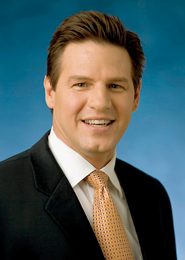High-frequency traders, money managers and major exchanges want the Securities and Exchange Commission to propose some sort of "trade-at" rule. Broker-dealers that internalize retail orders and operate dark pools say it’s a bad idea.

The SEC broached the idea of restricting off-board trading via a so-called trade-at rule in January when it issued its Concept Release. The comment period covering the Release ended April 21 and the votes–for and against–have come in.
"The Commission should consider the costs and benefits of a ‘trade-at’ rule," Gus Sauter, chief investment officer at money manager Vanguard Group, told the regulator.
"Knight strongly opposes the concept of a trade-at rule," Len Amoruso, the general counsel for wholesaler Knight Capital Group.
A trade-at rule, as envisioned by the SEC, would require brokers to send all their orders to the public markets and bar them from trading against, or "internalizing," those orders unless they took certain steps. The idea is just a suggestion at this point, but could, after industry debate, be crafted into a rule.
The concept stems from concern by the SEC and certain industry players, including Vanguard, that too many orders are being traded away from the public markets. That, they fret, is impairing the price-discovery process.
Under the SEC’s trade-at idea, a broker could only internalize an incoming order if he maintained a limit order in that stock at the national best bid or offer (NBBO). If he didn’t, he could still internalize the order if he took one of two actions: (a) sweep all available limit orders that might otherwise trade against the broker’s order or (b) price improve the order by the minimum tick. If he did none of the above, he would be required to route the order away.
If a trade-at rule comes to pass, it would represent a dramatic change in the way business is now conducted. More order flow would find its way to the public markets. That would cut into the profits of large broker-dealers. It could also increase trading costs for their customers, the rule’s detractors argue. "This could represent a monumental and fundamental shift in the overall equities marketplace model," Chris Nagy, a managing director in charge of order routing, sales and strategy at TD Ameritrade, said at a recent industry conference. (Nagy is opposed to the rule.)
By and large, industry reaction is breaking down along predictable lines. Those organizations that would benefit from more flow reaching the public marketplace are in favor of a trade-at rule or something similar. Those who could see their businesses harmed are opposed.
The chief beneficiaries of a trade-at rule would be the exchanges. All four of the major exchange operators have publicly stated they are opposed to the rule as conceived by the SEC, calling it too harsh. The two largest exchanges however have said they see room for a similar, if gentler, rule.
NYSE Euronext told the SEC that one approach might be to require a broker-dealer wishing to internalize to post some kind of quote in the market. The internalizer should also be required to provide his customer with some amount of price improvement. The level of price improvement need not be a full tick, as the SEC suggested, but an amount that is "somewhat meaningful," according to Joe Mecane, a NYSE Euronext executive vice president in charge of U.S. cash markets. Mecane was speaking at this year’s Options Industry Conference.

"I don’t know the right answer," Mecane added. "Clearly, it’s a difficult problem. You don’t want to reign in practices that have been beneficial to the market. But at the same time you don’t want to have the growth [in offboard trading] continue and have potential adverse effects."
In January 2008, 18 percent of equities trading volume was executed off-board, according to a recent research note from Macquarie Group. This past January, the number reached 31 percent.
Nasdaq OMX is also in favor of some sorts of requirements in order to internalize. "Like the NYSE, we are not arguing against the trade-at rule," Eric Noll, Nasdaq’s head of transaction services, said at OIC. "We are suggesting if you want to trade at the NBBO, you should have a public NBBO quote displayed. It doesn’t have to be of significant size, but you should be contributing to the inside market in order for you to internalize."
Some of the exchanges’ biggest customers also maintain that broker-dealers who internalize should not be allowed to do so unless they meet certain requirements. Several high-frequency and proprietary trading firms told the SEC in their comment letters that internalization had a negative effect on the public markets. Wolverine Trading, for one, told the SEC that internalization violated the spirit of Regulation NMS. "The firm does not believe the full intent of Regulation NMS is being adhered to when participants may step in front of other willing liquidity providers when it is convenient or opportunistic to do so."
Echoing Nasdaq, Wolverine believes brokers should be required to post limit orders if they want to internalize. "If a broker or dealer is willing to effect a transaction at a price at or better than the NBBO, such broker or dealer should be obligated to notify all participants of their intent or willingness."
Executives from prop shop Bright Trading concurred: "This rule would solve the problem of market participants stepping in front of the NBBO for fractions of a cent," Bright officials told the SEC.
In contrast, most, if not all, of the major broker-dealers are opposed to a trade-at rule. Most either internalize retail orders or operate alternative trading systems, like dark pools, or both. Several, including Knight, Bank of America Merrill Lynch, UBS, TD Ameritrade, Credit Suisse and Citi, wrote comment letters criticizing the idea, as did the industry’s primary trade organizations, the Securities Industry and Financial Markets Association (SIFMA) and the Security Traders Association.
Credit Suisse argued competition between alternative trading systems and exchanges has been beneficial for investors and a trade-at rule would harm that competition. The big broker argued that the competition had forced the exchanges to improve their services in recent years.
The major wholesalers argued that a trade-at rule would harm the retail investor in two ways. First, reduced competition between the public and private markets would stifle innovation. Second, the economics of a trade would move against the retail investor.
A trade-at rule would impair the economic advantages of internalization for any of three reasons, according to the brokers. First, as retail brokers would likely route more orders to exchanges, they would incur access fees. Those fees would likely be passed on to their customers, the brokers commented. Second, if a trade-at rule requires brokers to price improve their orders by a minimum increment (currently one cent) the brokers would cease to price improve their orders.
UBS calculated that the five major wholesalers–Knight, UBS, Citadel, E*Trade and Citi/ATD–have paid out $650 million in price improvement to retail investors since May 2007. The firms price improved 59 percent of all shares they traded at an average cost to the dealers of $0.0043 per share, or 20 percent of the average spread. Knight noted that a requirement to pay out a penny per share in price improvement would force dealers to drop the practice all together.
Finally, if a trade-at rule came to pass, retail investors would trade at worse prices, brokers claimed. TD Ameritrade argued they would lose the price and size guarantees they now receive and would be forced to trade at multiple, often inferior prices on the public markets.
Institutional investors using dark pools to avoid market impact could also suffer economically, brokers argued. That’s because the operator of the pool would be forced to sweep the public markets in order to keep the trade in-house, UBS told the SEC. The sweep could act as a signal that there was large buying or selling interest in a stock, UBS said. That could impact the price of the stock, negating the benefits of the dark pool.




